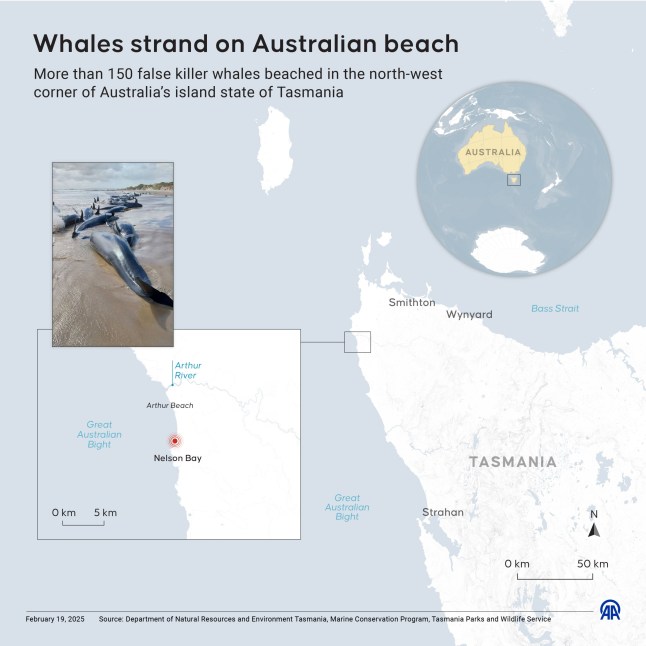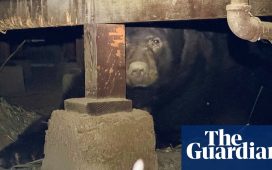
More than 150 false killer whales washed up on a remote beach on Australia’s island state of Tasmania, officials said.
Marine experts and veterinarians were at the scene near Arthur River on Tasmania’s northwest coast to help the 157 whales – of which only 90 appeared to be alive.
Department of Natural Resources and Environment liaison officer Brendon Clark said the inaccessibility of the beach, ocean conditions and challenges to getting specialist equipment to the remote area were complicating a response.
Authorities have said the whales – which weigh more than 1000 pounds – could not be refloated from the exposed surf beach.
‘To try to refloat the animals directly back into that surf would be challenging and then of course that would also present some enormous safety risks for our staff and personnel,’ Mr Clark told reporters.
A decision has since been made to euthanise the remaining surviving whales.


He said the stranding was the first by false killer whales in Tasmania since 1974 when a pod of more than 160 whales landed on a beach near Stanley on the northwest coast. Strandings in Tasmania are usually pilot whales.
Mr Clark declined to speculate on why the latest pod might have been stranded. Carcasses of dead whales would be examined for clues, he said.
The whales were found on Tuesday afternoon by resident Jocelyn Flint’s son, who discovered the stranded whales around midnight while fishing for sharks.


She said she had gone to the scene in the dark hours of the morning and returned after dawn but the whales were too big to attempt to refloat them.
‘The water was surging right up and they were thrashing. They’re just dying, they’ve sunk down in the sand. I think it’s too late. There are little babies. Up one end, there’s a lot of big ones. It’s sad.’
In 2022, 230 pilot whales stranded further south on the west coast at Macquarie Harbour.
The largest mass stranding in Australian history occurred in the same harbour in 2020 when 470 long-finned pilot whales became stuck on sandbars. Most of the beached whales died on both occasions.
The reasons for the beachings are unclear. Reasons could include disorientation caused by loud noises, illness, old age, injury, fleeing predators and severe weather.
Get in touch with our news team by emailing us at webnews@metro.co.uk.
For more stories like this, check our news page.
MORE: I rubbed shoulders with A-listers daily – I left it all behind for salt
MORE: Crocodile snatches grandfather in its jaws and drags him into water at theme park
MORE: I flew to Australia and had zero jet lag thanks to this iPhone app












